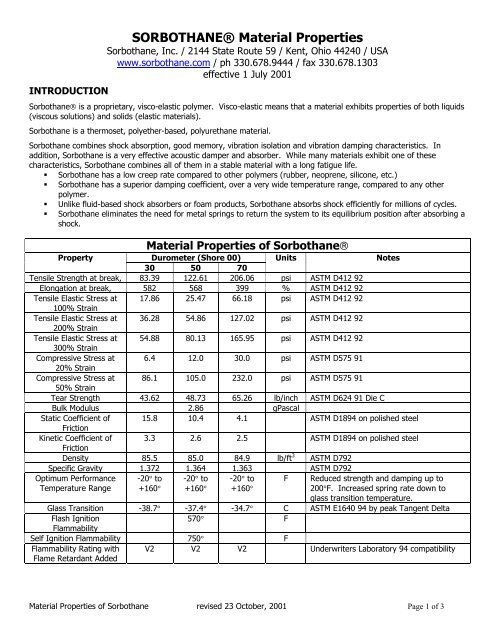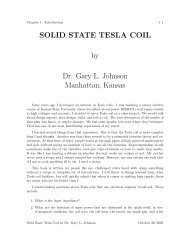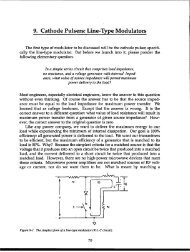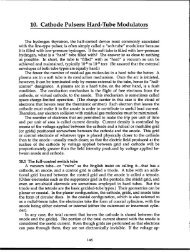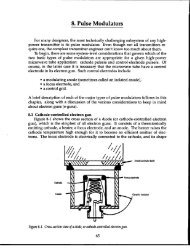SORBOTHANE® Material Properties - Dean-O's Toy Box
SORBOTHANE® Material Properties - Dean-O's Toy Box
SORBOTHANE® Material Properties - Dean-O's Toy Box
You also want an ePaper? Increase the reach of your titles
YUMPU automatically turns print PDFs into web optimized ePapers that Google loves.
INTRODUCTION<br />
SORBOTHANE® <strong>Material</strong> <strong>Properties</strong><br />
Sorbothane, Inc. / 2144 State Route 59 / Kent, Ohio 44240 / USA<br />
www.sorbothane.com / ph 330.678.9444 / fax 330.678.1303<br />
effective 1 July 2001<br />
Sorbothane is a proprietary, visco-elastic polymer. Visco-elastic means that a material exhibits properties of both liquids<br />
(viscous solutions) and solids (elastic materials).<br />
Sorbothane is a thermoset, polyether-based, polyurethane material.<br />
Sorbothane combines shock absorption, good memory, vibration isolation and vibration damping characteristics. In<br />
addition, Sorbothane is a very effective acoustic damper and absorber. While many materials exhibit one of these<br />
characteristics, Sorbothane combines all of them in a stable material with a long fatigue life.<br />
Sorbothane has a low creep rate compared to other polymers (rubber, neoprene, silicone, etc.)<br />
Sorbothane has a superior damping coefficient, over a very wide temperature range, compared to any other<br />
polymer.<br />
Unlike fluid-based shock absorbers or foam products, Sorbothane absorbs shock efficiently for millions of cycles.<br />
Sorbothane eliminates the need for metal springs to return the system to its equilibrium position after absorbing a<br />
shock.<br />
<strong>Material</strong> <strong>Properties</strong> of Sorbothane<br />
Property<br />
Durometer (Shore 00) Units<br />
Notes<br />
30 50 70<br />
Tensile Strength at break, 83.39 122.61 206.06 psi ASTM D412 92<br />
Elongation at break, 582 568 399 % ASTM D412 92<br />
Tensile Elastic Stress at 17.86 25.47 66.18 psi ASTM D412 92<br />
100% Strain<br />
Tensile Elastic Stress at 36.28 54.86 127.02 psi ASTM D412 92<br />
200% Strain<br />
Tensile Elastic Stress at 54.88 80.13 165.95 psi ASTM D412 92<br />
300% Strain<br />
Compressive Stress at 6.4 12.0 30.0 psi ASTM D575 91<br />
20% Strain<br />
Compressive Stress at 86.1 105.0 232.0 psi ASTM D575 91<br />
50% Strain<br />
Tear Strength 43.62 48.73 65.26 lb/inch ASTM D624 91 Die C<br />
Bulk Modulus 2.86 gPascal<br />
Static Coefficient of 15.8 10.4 4.1 ASTM D1894 on polished steel<br />
Friction<br />
Kinetic Coefficient of 3.3 2.6 2.5 ASTM D1894 on polished steel<br />
Friction<br />
Density 85.5 85.0 84.9 lb/ft 3 ASTM D792<br />
Specific Gravity 1.372 1.364 1.363 ASTM D792<br />
Optimum Performance<br />
Temperature Range<br />
-20 to<br />
+160<br />
-20 to<br />
+160<br />
-20 to<br />
+160<br />
F Reduced strength and damping up to<br />
200F. Increased spring rate down to<br />
glass transition temperature.<br />
Glass Transition -38.7 -37.4 -34.7 C ASTM E1640 94 by peak Tangent Delta<br />
Flash Ignition<br />
570<br />
F<br />
Flammability<br />
Self Ignition Flammability 750 F<br />
Flammability Rating with<br />
Flame Retardant Added<br />
V2 V2 V2 Underwriters Laboratory 94 compatibility<br />
<strong>Material</strong> <strong>Properties</strong> of Sorbothane revised 23 October, 2001 Page 1 of 3
<strong>Material</strong> <strong>Properties</strong> of Sorbothane<br />
Property<br />
Durometer (Shore 00) Units<br />
Notes<br />
30 50 70<br />
Resilience Test<br />
2 11 22 % ASTM D2632 92<br />
Rebound Height<br />
Resilience Test<br />
Rebound Height<br />
16 18 25 % ASTM D2632 92 modified for the effects<br />
of material tack<br />
Dielectric Strength 241 256 261 V/mil ASTM D149 97<br />
Dynamic Young’s 90 105 120 psi<br />
Modulus at 5 Hertz<br />
Dynamic Young’s 135 150 162 psi<br />
Modulus at 15 Hertz<br />
Dynamic Young’s 186 210 237 psi<br />
Modulus at 30 Hertz<br />
Dynamic Young’s 246 270 300 psi<br />
Modulus at 50 Hertz<br />
Tangent Delta at 0.30 0.56 0.56<br />
5 Hertz excitation<br />
Tangent Delta at 0.38 0.58 0.60<br />
15 Hertz excitation<br />
Tangent Delta at 0.45 0.57 0.59<br />
30 Hertz excitation<br />
Tangent Delta at 0.35 0.50 0.55<br />
50 Hertz excitation<br />
Bacterial Resistance<br />
No growth<br />
Fungal Resistance<br />
No growth<br />
Heat Aging Stable 72 hours @ 158F No change in size,<br />
appearance or durometer<br />
Ultraviolet<br />
Good<br />
Ozone<br />
Can be compounded for resistance<br />
Chemical Resistance to<br />
-1.4 % wt ASTM D543, 7-day immersion<br />
Hydraulic Fluid<br />
change<br />
Chemical Resistance to<br />
4.3 % wt ASTM D543, 7-day immersion<br />
Kerosene<br />
change<br />
Chemical Resistance to<br />
6.4 % wt ASTM D543, 7-day immersion<br />
Diesel<br />
change<br />
Chemical Resistance to<br />
5.0 % wt ASTM D543, 7-day immersion<br />
Soap Solution<br />
change<br />
Acoustic <strong>Properties</strong>:<br />
transmission loss in Air<br />
greater than 40 decibels/cm at 50 Hertz. Transmission loss increases<br />
with frequency.<br />
Hysteresis Response of Sorbothane and Natural Rubber<br />
<strong>Material</strong> <strong>Properties</strong> of Sorbothane revised 23 October, 2001 Page 2 of 3
Response of Sorbothane and other materials to an Impulse<br />
Transmissibility of Sorbothane and other <strong>Material</strong>s<br />
as a function of the Excitation Frequency/Natural Frequency Ratio<br />
<strong>Material</strong> <strong>Properties</strong> of Sorbothane revised 23 October, 2001 Page 3 of 3


